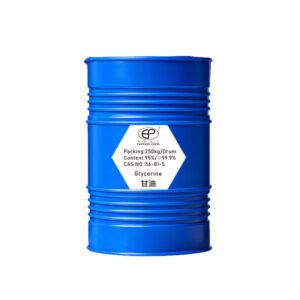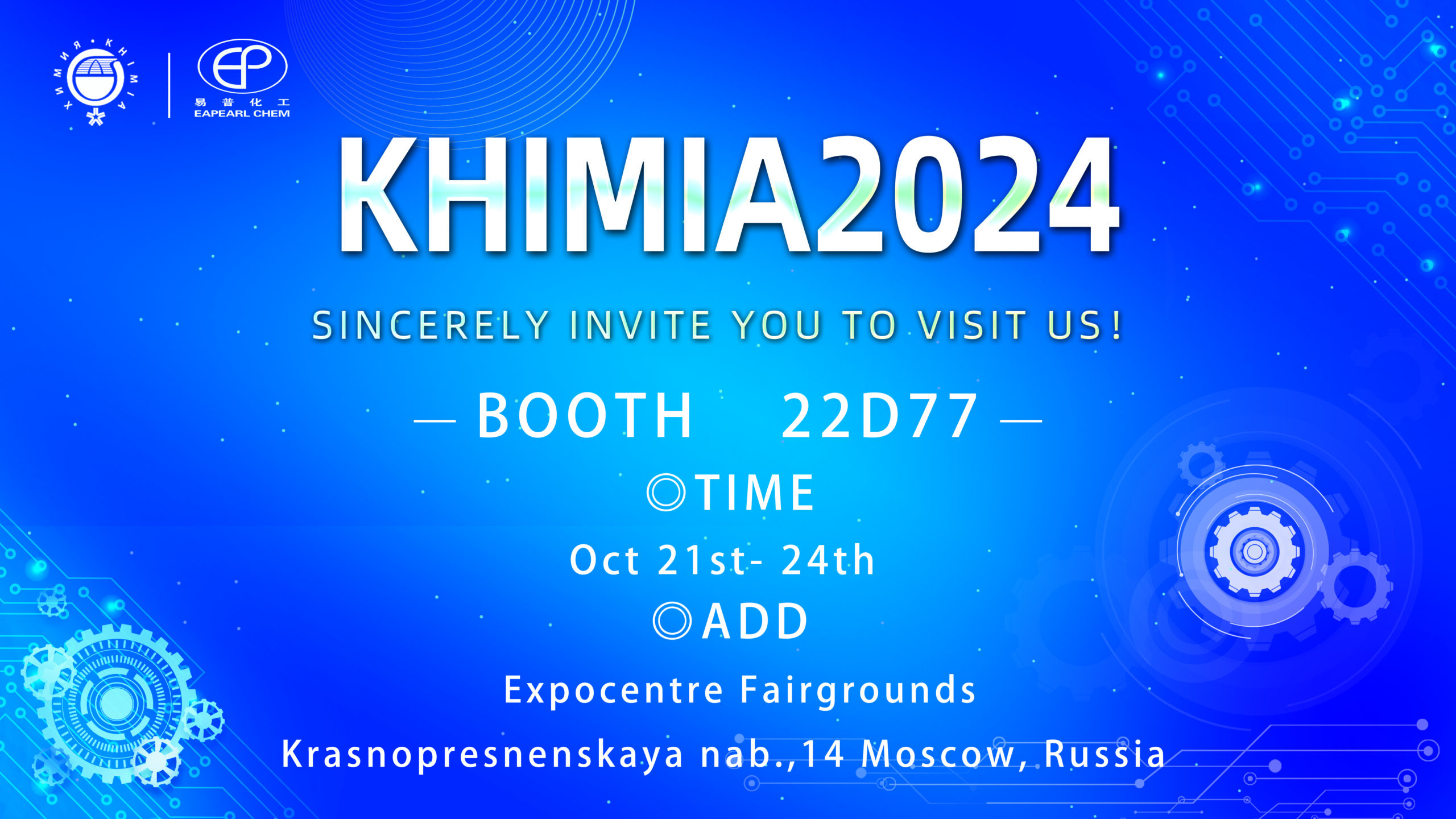Glycerin, or glycerol, is a versatile compound that finds applications in various industries, including pharmaceuticals, cosmetics, food, and many others. Because of its hygroscopicity, it can be used to make humectant, moisturizer and emollient. But have you ever wondered what raw materials are used to make glycerin? In this paper, we will discuss the production process, raw materials and methods of glycerin. So let’s dive in!
Table of Contents
- Introduction
- Natural Glycerin Production
- 2.1. Saponification Reaction
- 2.2. Waste Alkali Solution
- 2.3. Glycerin Water from Hydrolysis
- 2.4. Purification Process
- 2.5. Concentration and Refining
- Synthetic Glycerin Production
- 3.1. Propylene Chlorination Method
- 3.2. Propylene and Peracetic Acid Reaction
- Conclusion
- FAQs
- Get Access Now: https://epchems.com/product-glycerin/
1.Introduction
Glycerin, with its versatile properties, is in high demand across various industries. From skincare products to pharmaceutical formulations, it plays a crucial role. But how is glycerin produced? Let’s explore the raw materials and processes involved in its production.
2.Natural Glycerin Production
Natural glycerin is a byproduct of the soap-making process. It is produced from fatty acids containing approximately 58% of glycerin. The production of natural glycerin involves a series of steps, including saponification, separation, and purification.
2.1. Saponification Reaction
In the soap industry, saponification is the critical process that yields glycerin as a byproduct. The reaction involves the hydrolysis of fats or oils with an alkali, typically sodium hydroxide. The reaction results in two layers: the upper layer consists mainly of soap (rich acid sodium salt) and a small amount of glycerin. In contrast, the lower layer is a waste alkali solution.
2.2. Waste Alkali Solution
The waste alkali solution obtained from the saponification reaction contains a dilute glycerin solution, salts, and sodium hydroxide. This solution typically includes 9-16% glycerin and 8-20% inorganic salts. Although the glycerin content is relatively low in the waste alkali solution, it is a starting point for further purification.
2.3. Glycerin Water from Hydrolysis
Hydrolysis using high pressure has gained popularity in obtaining glycerin water with higher glycerin content in recent years. Unlike the waste alkali solution, this glycerin water obtained from the hydrolysis of fats (also known as sweet water) does not contain inorganic acids. It typically contains around 14-20% glycerin and minimal inorganic salt.
2.4. Purification Process
Both the waste alkali solution and glycerin water obtained from hydrolysis contain impurities and require purification. The purification process involves several steps to remove impurities such as electrolytes, aldehydes, pigments, and esters. This process ensures the glycerin’s quality and purity for various applications.
2.5. Concentration and Refining
After the purification process, the crude glycerin undergoes concentration to increase its glycerin content. The concentrated glycerin then goes through refining processes like distillation, decolorization, and deodorization to obtain high-quality refined glycerin suitable for commercial use.
3.Synthetic Glycerin Production
Apart from natural glycerin, synthetic glycerin is also produced industrially. Synthetic glycerin involves chemical reactions that convert specific raw materials into glycerin. Let’s explore two standard methods used for artificial glycerin production.
3.1. Propylene Chlorination Method
The propylene chlorination method is a practical production method for synthetic glycerin. It involves a series of chemical reactions using compounds like propylene, chlorination, dichloroacetic acid, saponification, and epichlorohydrin. The responses include chlorinating propylene at high temperatures, acidifying chloropropylene with dichloroacetic acid, converting dichloropropanol into a soap-like substance, and breaking epichlorohydrin into simpler compounds.
The hydrolysis of epichlorohydrin is done by heating it to 150°C and applying 1.37MPa of carbon dioxide pressure in a solution containing hydroxide and sodium carbonate. The resulting glycerin dilute solution is then concentrated, desalted, and distilled to obtain glycerin with a purity of over 98%.
3.2. Propylene and Peracetic Acid Reaction
Another method of synthetic glycerin production involves the reaction between propylene and peracetic acid. The peracetic acid converts enol propanol into epichlorohydrin, which further hydrolyzes to glycerin. This method does not require a catalyst, and peracetic acid production occurs through ethylene and oxygen gas-phase oxidation.
The glycerin production from propylene and peracetic acid is carried out continuously in a reaction distillation tower. The glycerol-water solution is obtained at the bottom of the building, while the top of the tower separates ethyl acetate solvent and water. This method offers high selectivity and yield and simplifies the reaction process.
4.Conclusion
Glycerin, a versatile compound with numerous applications, can be produced using natural and synthetic methods. Natural glycerin is obtained as a byproduct of soap-making, while synthetic glycerin involves chemical reactions using specific raw materials. The production processes involve purification, concentration, and refining to get high-quality glycerin suitable for various industries.
5.FAQs
Q1. What is glycerin used for?
A1.Glycerin is used in various industries, including cosmetics, pharmaceuticals, food, and personal care products. It serves as a moisturizer, humectant, solvent, and emollient.
Q2. Is glycerin safe for use?
A2.Glycerin is generally considered safe for use in regulated quantities. However, individuals with specific allergies or medical conditions should consult a healthcare professional before using glycerin-based products.
Q3. Can glycerin be produced from vegetable oils?
A3.Yes, glycerin can be produced from vegetable oils through the saponification process. Vegetable oils, such as palm or soybean, contain fatty acids that yield glycerin as a byproduct during saponification.
Q4. Is glycerin environmentally friendly?
A4.Glycerin itself is biodegradable and non-toxic. However, the production processes and sourcing of raw materials for glycerin can have varying environmental impacts depending on the specific methods employed.
Q5. Can glycerin be used for DIY skincare products?
A5.Yes, glycerin is a common ingredient in DIY skincare products. It can be used in formulations such as moisturizers, serums, and soaps to provide hydration and nourishment to the skin.
Note: The answers above are for informational purposes only and should not substitute professional advice. Consult relevant experts or authorities for specific queries.
Get Access Now: https://epchems.com/product-glycerin/
In conclusion, the production of glycerin involves both natural and synthetic methods. Therefore, when you find glycerin in skin care products, pharmaceuticals and even foods, you will know what raw materials it is made of and how it reaches your hands.The raw materials and processes used in glycerin production ensure the quality and purity of this versatile compound. Glycerin finds its way into various industries, offering numerous benefits and applications.
So the next time you come across glycerin in your skincare products, pharmaceuticals, or even food items, you’ll better understand what raw materials are used to make it and how it reaches your hands.
Get Access to more fascinating articles and information by visiting https://epchems.com/product-glycerin/ now!








